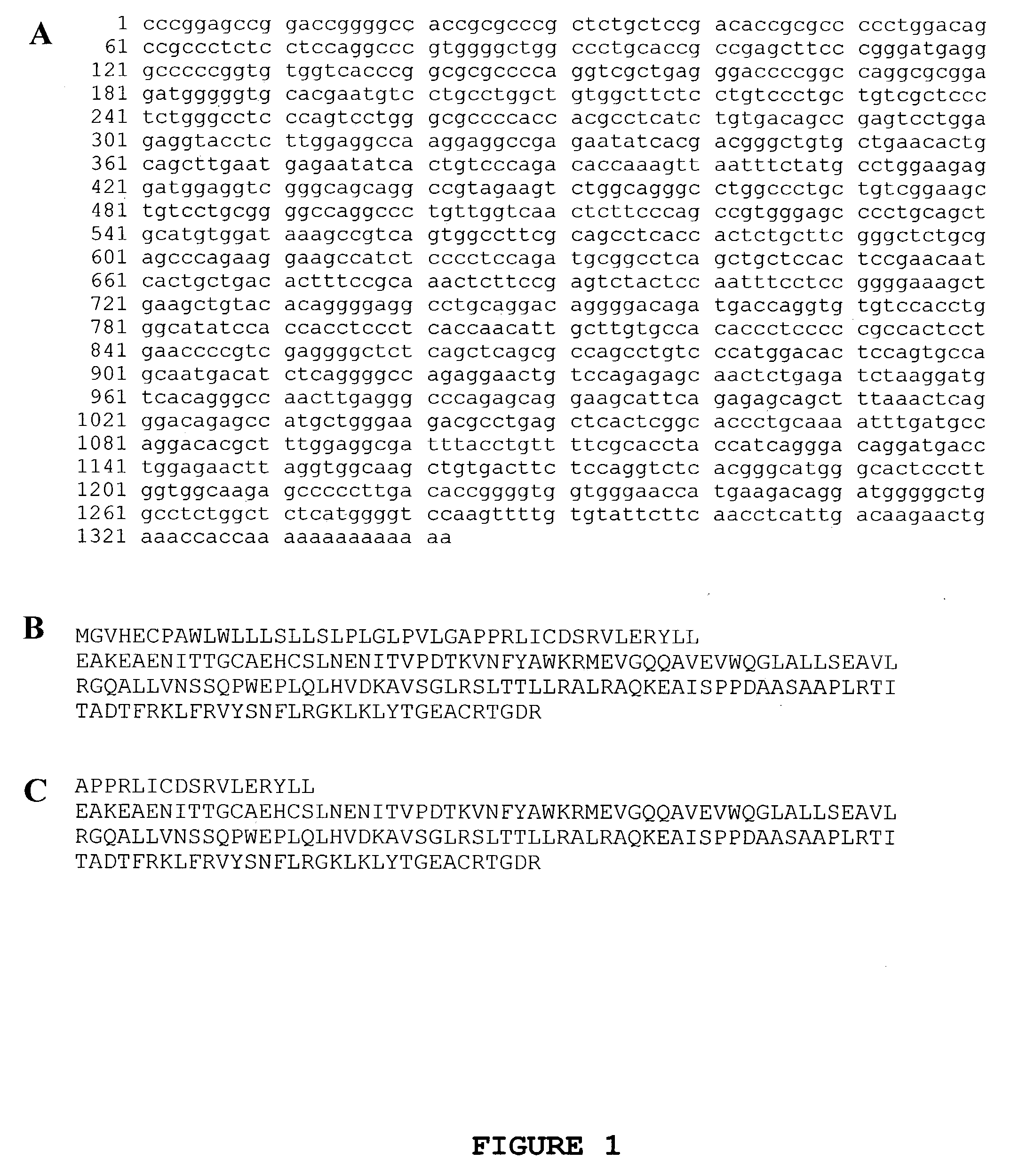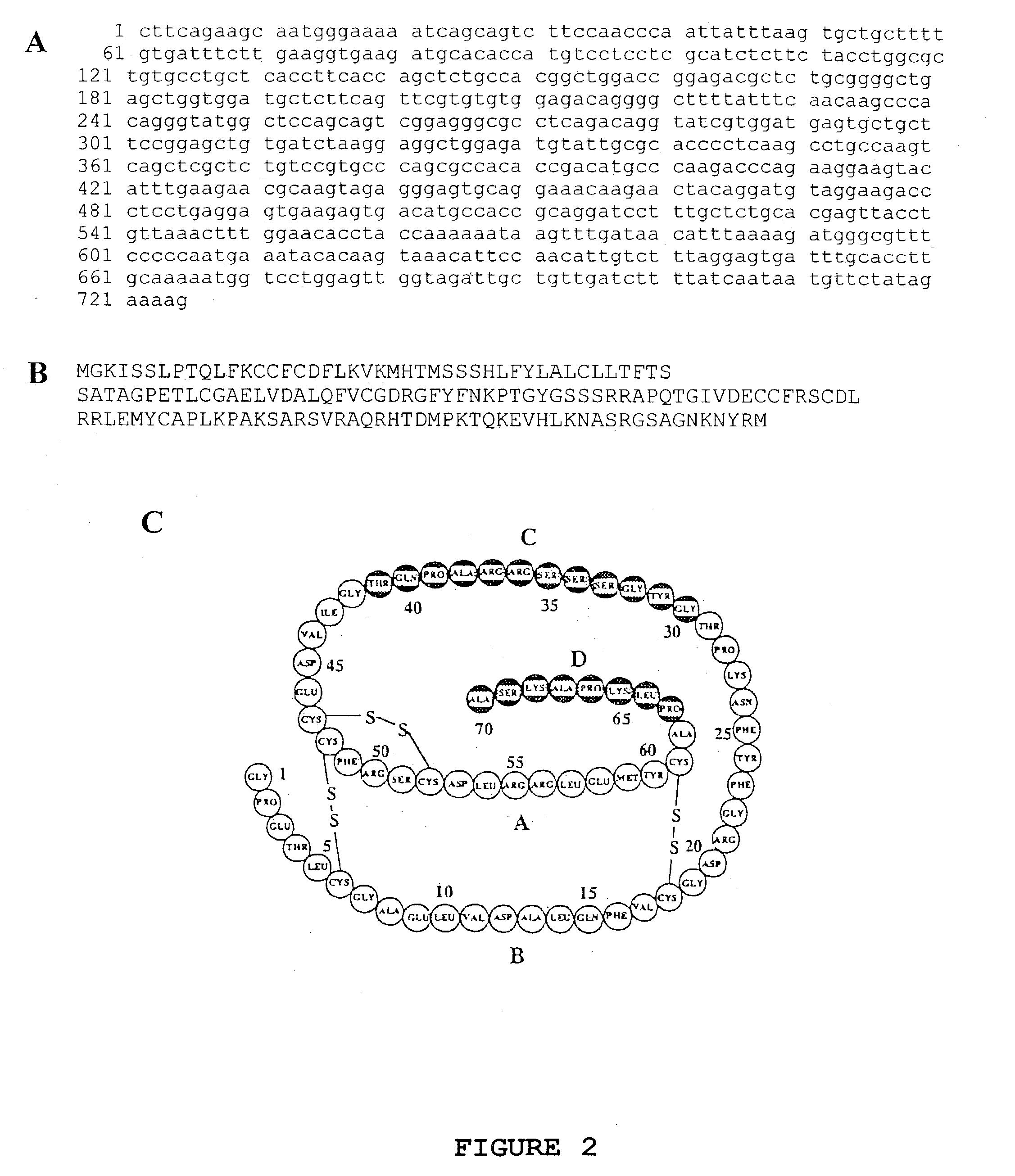Neuroprotective synergy of erythropoietin and insulin-like growth factor
a technology of erythropoietin and growth factor, which is applied in the field of neuroprotective synergy of erythropoietin and insulinlike growth factor, can solve the problems of speech impairment and loss of coordination, no effective therapies or cures, and reduced the effect of l-dopa treatmen
- Summary
- Abstract
- Description
- Claims
- Application Information
AI Technical Summary
Benefits of technology
Problems solved by technology
Method used
Image
Examples
example ii
PI3-Kinase is Required for Neuroprotection by EPO And IGF-I
[0168] This example demonstrates that the PI3 kinase can play a role in mediating the neuroprotective effects of EPO and IGF-I.
[0169] PI3-kinase is involved in IGF-I and EPO signaling (Mayeux et al., supra, 1993; Kermer et al., supra, 2000; and Damen et al., J. Biol. Chem. 270:23402-23408 (1995)). In order to elucidate the role of PI3-kinase in the neuroprotective effects of EPO and IGF-I, rat cerebrocortical neurons were preincubated for three hours with EPO, IGF-I, or EPO in combination with IGF-I (EPO / IGF-I) in the presence or absence of 10 .mu.M LY294002, a specific PI3-kinase inhibitor. As shown in FIG. 4, neuronal apoptosis resulting from NMDA exposure (200 .mu.M NMDA and 5 .mu.M glycine for 20 minutes) decreased in cells preincubated with EPO, IGF-I or EPO / IGF-I. As further shown in FIG. 4, LY294002 abolished the neuroprotective effect of EPO and IGF-I either alone or in combination (p<0.05) but did not itself cause n...
example iii
EPO And IGF-I Cooperate in Activating Akt
[0176] This example demonstrates that the Akt kinase can be cooperatively activated by EPO and IGF-I in neuronal cells.
[0177] Akt-kinase is activated downstream of
[0178] PI3-kinase-mediated production of 3' phospholipids. In response to production of phosphotidylinositol-3,4,5-trisphosphate, Akt is phosphorylated at two critical sites: serine-473 and threonine-308 (Russell et al., Nuerobiol. 36:455-467 (1998); Scheid and Woodgett, supra, 2001).
[0179] To assess possible activation of the Akt kinase, cerebrocortical-cultures were exposed to EPO or IGF-I for three hours and immunoblotted as described above using anti-phospho Akt (anti-pAkt) and anti-Akt antibodies from Cell Signaling Technologies at 1:2000 dilution. A three hour incubation with EPO or IGF-I resulted in moderate Akt activation, as evidenced by increased phospho-serine-473 Akt detected by western blotting (FIG. 6A). Co-incubation with EPO and IGF-I resulted in a much larger increa...
example iv
The Akt Kinase can Play a Role in Mediating the Neuroprotective Effects of EPO and IGF-I
[0182] This example demonstrates that inhibition of Akt activity with a dominant negative form of Akt reduces the neuroprotective effects of EPO and IGF-I.
[0183] The role of Akt in the EPO / IGF-I signaling pathway was analyzed using a dominant negative Akt construct (dn-Akt) in which a critical phosphorylation site has been mutated (Fujio and Walsh, J. Biol. Chem. 274:16349-16354 (1999)). Cerebrocortical cultures were infected with an adenoviral vector encoding dn-Akt (Fujio and Walsh, supra, 1999) and assayed for the effects of NMDA alone or in cultures also treated with EPO in combination with IGF-I. Parallel cerebrocortical cultures were infected with an adenoviral vector encoding wild-type Akt (wt-Akt) as a control. As shown in FIG. 7, infection for 36 hours with either dominant negative or wild type Akt had no significant effect on neuronal viability. Overexpression of wt-Akt also had no sign...
PUM
| Property | Measurement | Unit |
|---|---|---|
| time | aaaaa | aaaaa |
| time | aaaaa | aaaaa |
| time | aaaaa | aaaaa |
Abstract
Description
Claims
Application Information
 Login to View More
Login to View More - R&D
- Intellectual Property
- Life Sciences
- Materials
- Tech Scout
- Unparalleled Data Quality
- Higher Quality Content
- 60% Fewer Hallucinations
Browse by: Latest US Patents, China's latest patents, Technical Efficacy Thesaurus, Application Domain, Technology Topic, Popular Technical Reports.
© 2025 PatSnap. All rights reserved.Legal|Privacy policy|Modern Slavery Act Transparency Statement|Sitemap|About US| Contact US: help@patsnap.com



